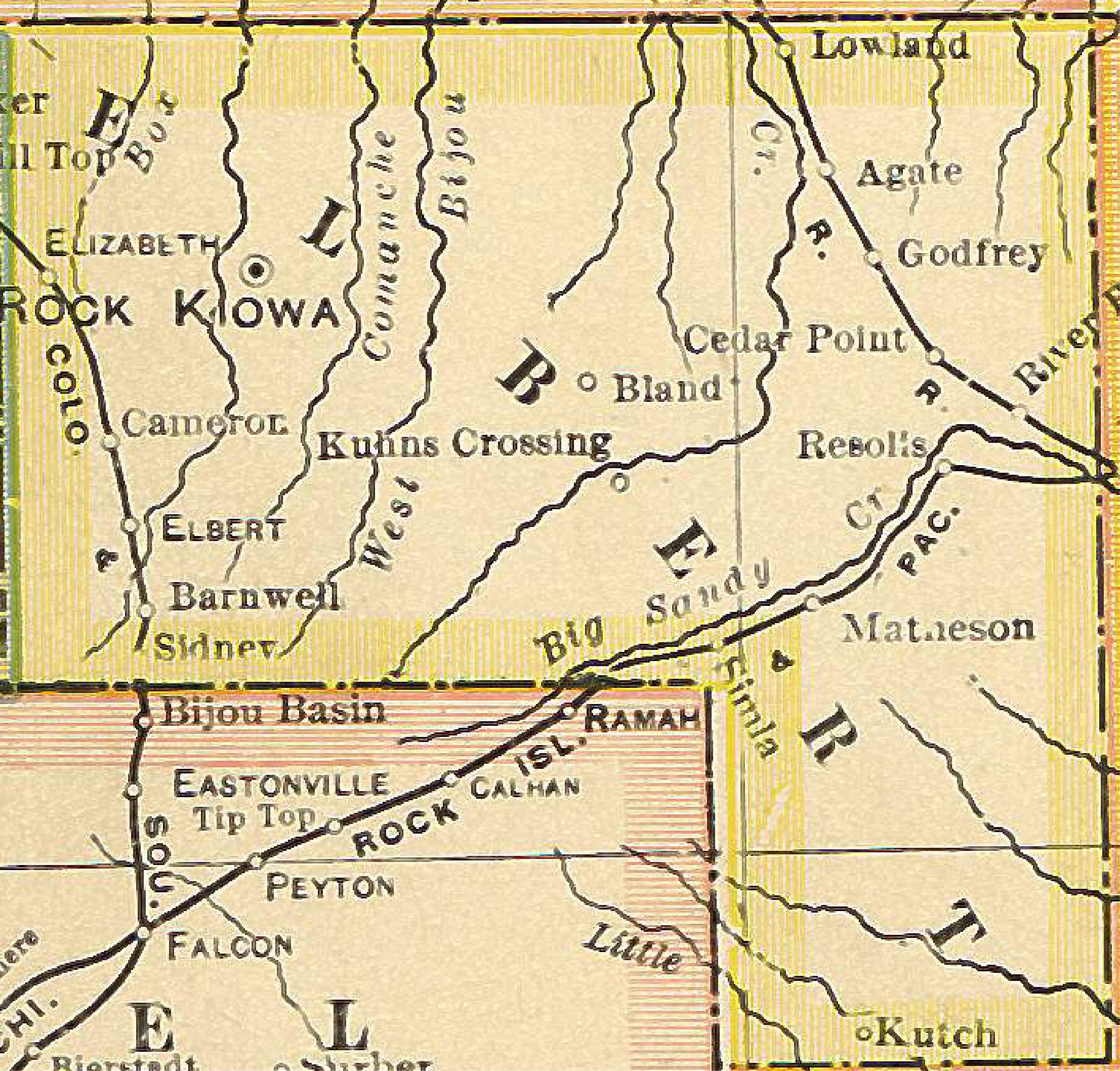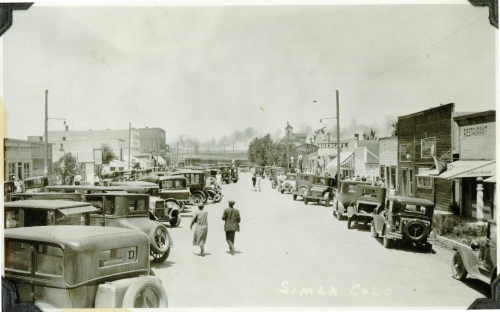
In 1861, Colorado became an official United States Territory. Thirteen years later, on February 2, 1874, Elbert County was established using land taken from Douglas and Greenwood Counties, which was abolished later in 1874. At that time, the county lines were very different than they are today, with the eastern portion of the county sharing a border with Kansas. In February of 1889, Elbert county’s boundaries were redrawn and it became what it is today.
The county was named for Samuel Hitt Elbert, the 6th territorial governor, who served from 1873-1874. Appointed by President Ulysses S. Grant, Governor Elbert served for only one year before being removed from office without explanation.
Agate, originally known as Gebhard, was named and established as a town by the Union Pacific Railroad in 1876. The locals, however, referred to their town as Agate despite the railroad, and on April 24, 1882, it was officially named as such. Agate sits at an altitude of 5458 feet.

Elbert started as Gomer’s Mill which was located to the south of where it sits today. When the Denver and New Orleans Railroad laid their track 7 miles to the northeast of Gomer’s Mill, the townsfolk decided it was a good idea to move their town. Elbert was established in 1882, the first year the railroad came through and a plat was filed in 1884. The first Elbert County Fair was held in 1905 on the east side of what is now Elbert Road. The town thrived until 1935 when a catastrophic flood destroyed many buildings and damaged the railroad to the extent the tracks were finally abandoned and torn up.
Elizabeth was incorporated in 1890 and had a population of 300. The Denver and New Orleans Railroad stopped in Elizabeth, and many of the buildings including the old section house and the Elizabeth Hotel are still in use today. Elizabeth is 1.2 sq miles with a population of approximately 1566.

Kiowa, the county seat, was established in 1874 and incorporated on December 30, 1912. That same year, the courthouse, which still stands today, was built. Many of the original features are still preserved including the stamped tin ceilings and glass transoms over the doors. Kiowa has approx. 1400 residents and is .88 sq miles in size.
Matheson was named in 1888 when the Rock Island Railroad ran its first train through town. Today it is a peaceful town that is home to 254+ residents and sits at 5997 feet.
Simla, which was established in the late 1890s, was also a stop on the Rock Island Railroad. The town itself was later founded in 1909 and then incorporated in 1913.
Today, Elbert County covers an area of 1851 square miles with a population of approximately 28,000 people.
Unincorporated Elbert County, which encompasses all land except for Elizabeth, Kiowa, and Simla, is governed by the county government which is a political subdivision of state government and may only exercise those powers specifically provided in state law.
The Elbert County government is made up of the following elected officials: Assessor, Board of County Commissioners, Clerk and Recorder, Coroner, Sheriff, Surveyor, and Treasurer/Public Trustee.
Within Elbert County, there are six towns, Agate, Elbert, Elizabeth, Kiowa, Matheson, and Simla.
Agate, Elbert, and Matheson are unincorporated, have no local government, and are governed by the county government.
Elizabeth and Simla are statutory towns and are governed by an elected Mayor and a Board of 6-7 elected trustees. Governance is limited to the town boundaries and all areas outside of those boundaries are part of unincorporated Elbert county and are subject to county governance.
Kiowa, the county seat, is a Home Rule Municipality that is governed by an elected Mayor and 6 elected Trustees.
A Home Rule Municipality is allowed by the Colorado Constitution and has a charter that provides the town with greater authority to regulate local and municipal matters than a statutory town allows. As with Elizabeth and Simla, all area outside of the municipality is subject to county governance.
Much has changed since the first settlers came to Elbert County, but as they say, the more things change, the more they stay the same. Elbert County’s rich western heritage of farming and ranching can still be seen today wherever you may look; from a cowboy astride his mount checking on newborn calves to freshly cut hay drying in a field, summer fairs, rodeos, and small-town parades.
The town mercantile may have been replaced by supermarkets and saloons by family restaurants, but the spirit of the American West and the values it engendered, hard work, integrity, and self-reliance still live and thrive in Elbert County.

 Menu
Menu

